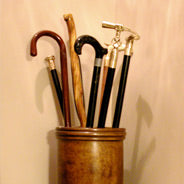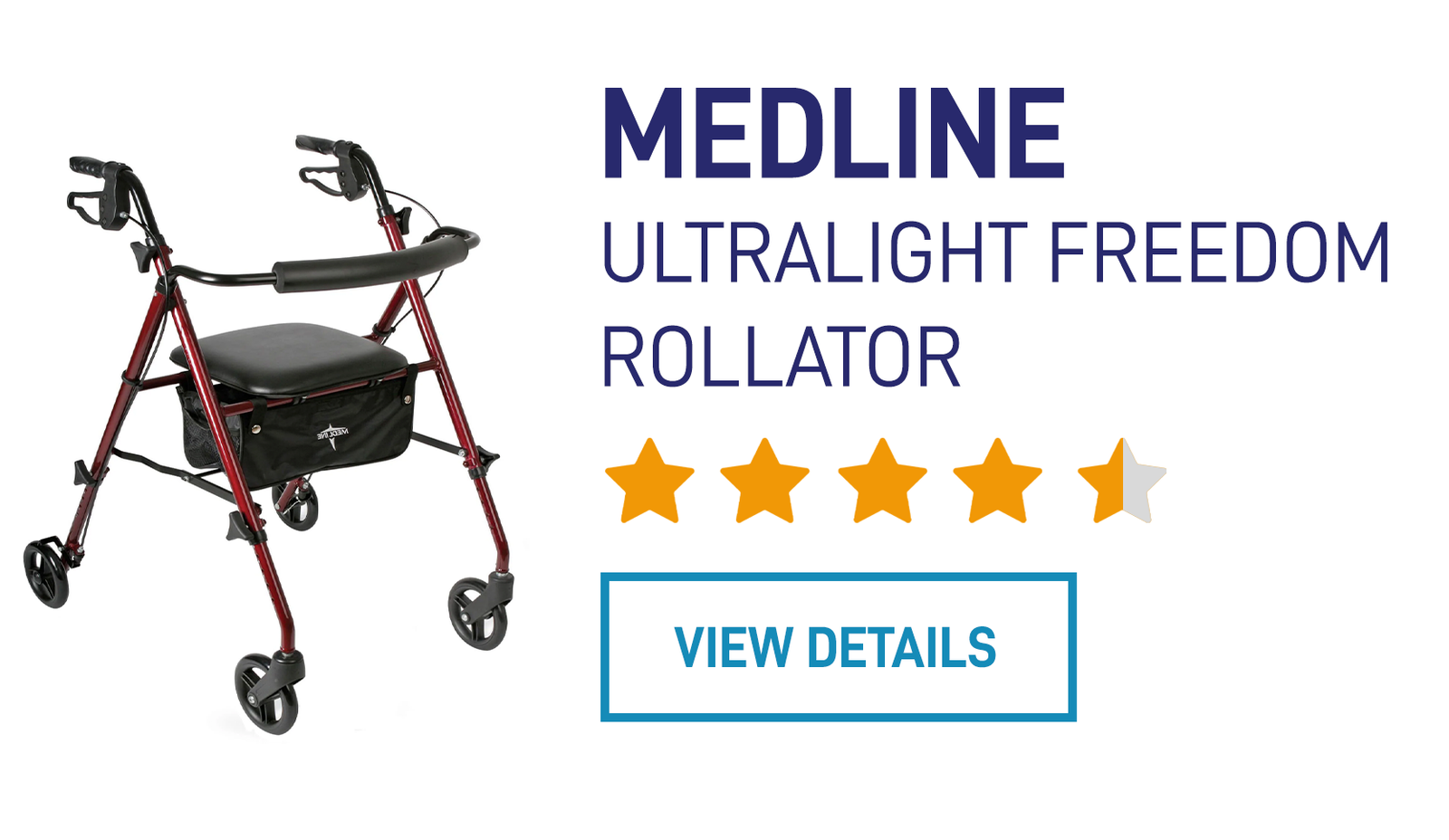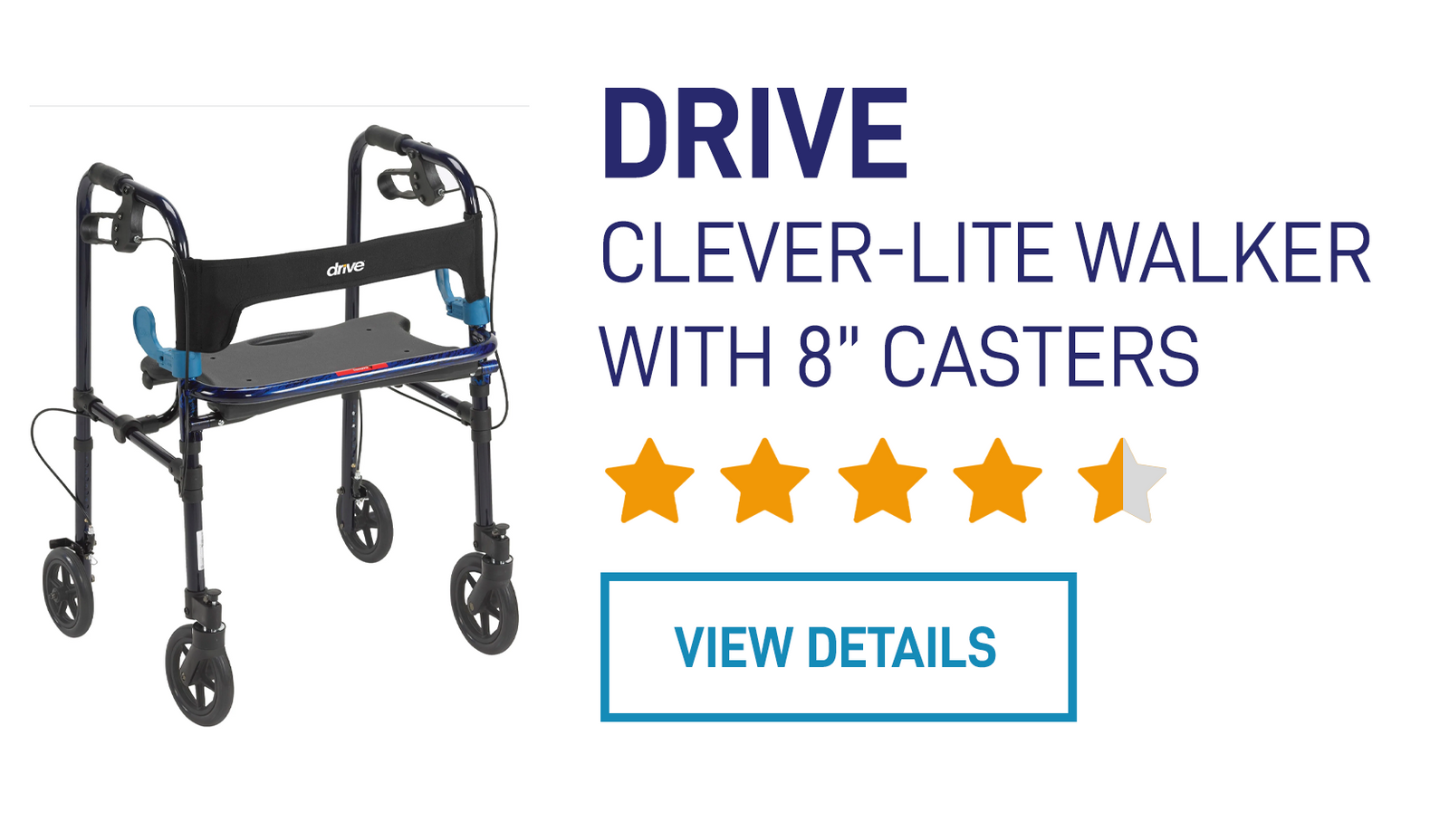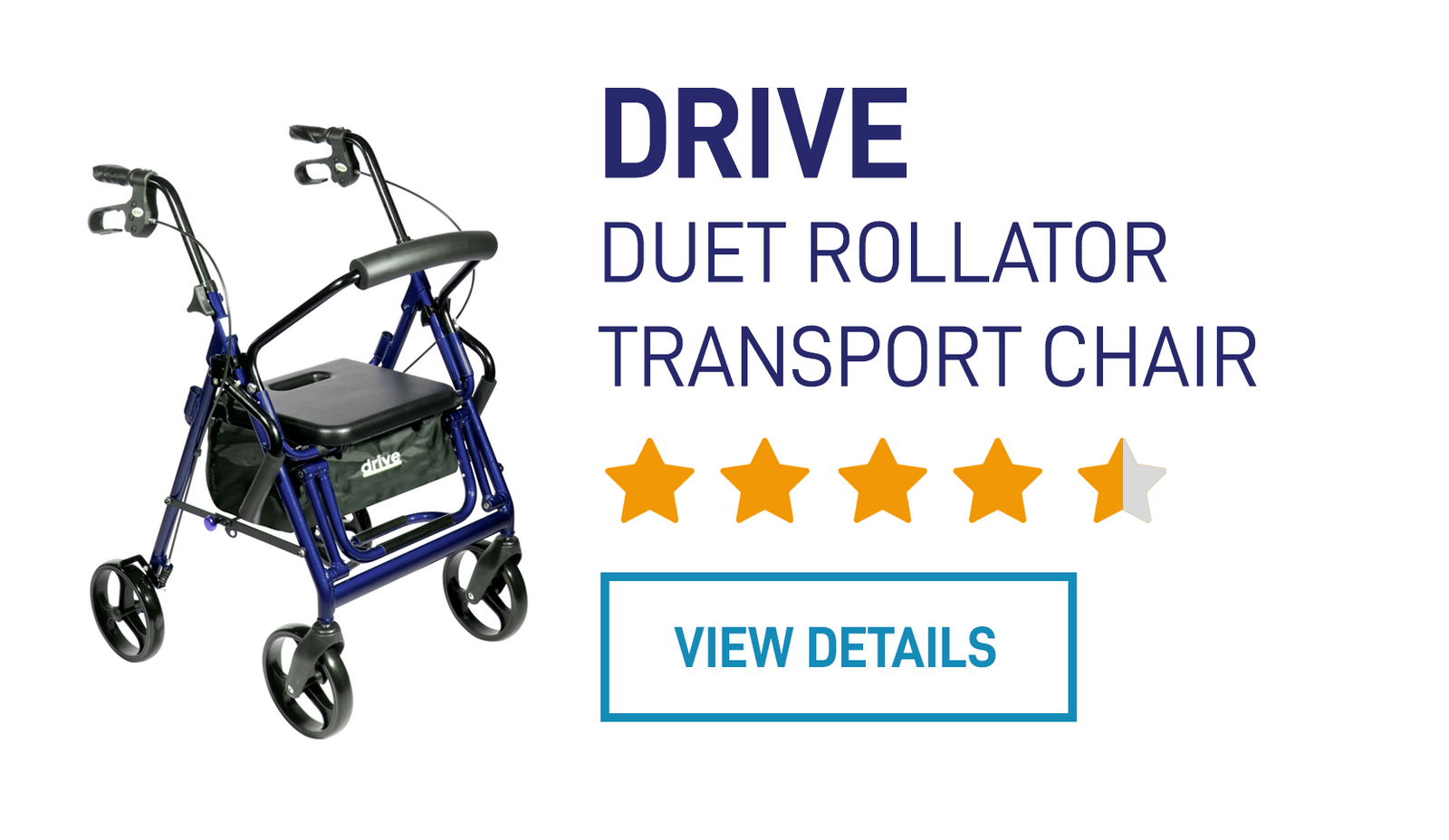Your Cart is Empty
Tips & Advice Center: Canes Tips

Buyer's Guide to Crutches >>
Standard Canes vs Quad Canes >>
Canes vs Walkers >>
Cane Features >>
Cane Handle Types >>
Why Buy a Seat Cane? >>
How to Use a Cane >>
Taking Stairs With Your Cane >>
Any Further Questions? >>

Buyer's Guide to Canes
Canes are among the most common mobility aids on the market. They are readily available and relatively cheap, making them the first solution many people turn to for their mobility issues. Unfortunately, that $20 round-handled cane from the local drugstore may cause you more problems than it solves. The wrong cane handle can put stress on your wrist, and if your cane is too short or too tall, it will only make things worse. When choosing a cane, you will want to consider several factors to help you find the walking aid that is right for you.
- Grip – As your main point of contact with your cane, the comfort of the grip is of singular importance. You'll want to consider material, shape, and design. Standard round canes can provide a smooth and classic look, but can be difficult to hold. Contoured grips provide a solution, and can be made from a wide range of materials. Try a long-wearing foam grip or an ergonomic gel grip to get the best possible fit for your needs.
- Handle – The shape of the handle can mean the difference between the cane you carry with you at all times and the one you leave in the umbrella stand. If you have trouble holding a standard hook-shaped tourist cane, try a Derby or Fritz handle instead, which have been designed to accommodate users with dexterity issues. If you need more stability, try an offset handle meant to distribute your weight along the cane.
- Tip – Cane tips receive a lot of wear and tear over the course of the day. Some canes do not have any reinforcement on the tips at all, which may be fine for light use. Others come with a reinforced rubber or plastic grip for added stability. If balance and stability is a concern for you, definitely look for these high density rubber-tipped canes or consider upgrading to a tri-pod cane tip.
- Height – A cane that is too short or too tall can be painful to use, and it can cause balance issues for the user. The best way to determine what size of cane you need is to have a friend or family member measure you. Wearing your normal walking shoes, stand as straight as possible with your arms falling naturally at your sides. The proper height of a cane should be the same as the distance from your wrist to the ground. Adjustable canes allow for the best possible match with a user's height.
- Color – Style, design, and color are as important in a cane as they are in any accessory. There's no need to carry a plain grey cane when there is a vast array of designs and materials out there for you to choose from! Find one that fits your style, and the cane becomes a fun accessory rather than a necessary burden.
The right cane can make your life a lot easier. As long as you consider all the necessary factors, you are sure to enjoy your new walking aid!

Standard Canes vs Quad Canes
One of the first things to consider when choosing a cane is just what type of cane you would like to use. Standard canes, or single-tip canes, are those with only one cane tip that touches the ground. Quad canes, also called quad-point canes, broadbased canes, or four legged canes, are built to be sturdier and feature four cane tips. Think about why you need a cane, and what will best assist you in your daily activities.
- Stability - If you are recovering from an injury to your leg, ankle, or foot, you are looking for a cane to give you added stability on your course to recovery. The most stable cane available is the quad cane, which can have a large base or a small base. The large base quad cane is the most sturdy, stable cane available, while the small base quad cane is smaller and more mobile.
- Weight- Quad canes are the most stable, but they are inevitably heavier than standard canes. For those with limited upper body strength or weak wrists, this can be a big problem. If weight is a consideration, you will want to consider a standard cane as your mobility aid, or upgrading to the ultra-light 8.5 oz. Carbon Fiber Quad Cane.
- Agility- In some cases a large base quad cane is simply not viable. Staircases may not have enough space to support all four cane tips, making it dangerous to use. Narrow hallways may not allow for the maneuverability a large base quad cane requires. If these are considerations for you, a small base quad cane or standard single-tip cane may be your best choice. Also consider that many single base canes can fold down to a much smaller size, making them convenient to carry with you when not immediately needed.
- Price- Canes are among the cheapest mobility aids available! Even the most advanced canes are less than half the price of any rollator. However, quad canes do tend to run a little more expensive than standard canes. For those on a tight budget, a small base quad cane may be the ideal balance of safety and economy.
Whichever cane you choose, be sure to consider every aspect of how you will use it and why you need it. Then you can be certain you've made the right choice to keep you safe and mobile.

Canes vs Walkers
Canes and walkers serve a similar purpose. Many people who use one will also use another. Here are some reasons you might use a cane:
- Canes are easy to transport. They are small, lightweight, and can easily fit on a bus or in a seat with you.
- Canes are inexpensive and readily available. Most corner drugstores carry at least one basic cane.
- Canes offer some support while leaving one hand free to carry something like a bag or cup.
- Quad canes offer more support than a traditional cane while still only requiring one hand to operate.
For others, a walker is a better solution. Here are some reasons you may want to get a walker:
- Walkers offer much more support than a simple cane. They can serve as an independent support brace.
- Walkers are often recommended after major surgery or while in recovery.
- Walkers can be equipped with trays to help you transport your food or belongings.
- Walkers are easy to use – there is no need to think about which hand to use or which side they belong on. You just open them up and go.
Many people opt to have both a cane and a walker. Walkers can be difficult to use outside over uneven surfaces or through very narrow hallways. Canes do not provide the same level of security for someone who lives alone or is very uneasy. Both canes and walkers are fairly inexpensive, so it may be best to get both and decide which aid or aids fit your needs the best.

Cane Features
Buying a new cane can be difficult, whether it's your first cane or your thirtieth. Luckily, there are only a few main points to remember. Bear these in mind while shopping, and you will soon be on your way to safe, effective, stable support.
- Hand grip – The hand grip is the main point of contact between you and your cane. It's important that the cane hand grip be both comfortable for you and effective as a support. Look for cane hand grips that are contoured, padded, or gel for the most secure hold.
- Tip – Many canes come with an anti-slip rubber cane tip. However, if you find yourself desiring more stability from your standard cane, you may want to try out a tripod cane tip. These slip on to most single-tip canes and provide a broader base of support. If you live in an area often prone to treacherous surfaces, such as winter ice or wet summer grass, you may want to consider a cane ice grip. Cane ice grips are like cleats for your cane, and improve balance immensely. They also flip up, conveniently out of the way when you don't need them.
- Length – If your cane is the wrong height for your body, it may be doing more harm than good. A cane that is too short causes you to hunch over, hurting your back and throwing off your center of balance. A cane that is too tall will strain your wrist, forcing your forearm to take the weight your cane is supposed to carry.
- Stability – The entire point of a cane is to provide stability and support for recovery or long-term needs. Therefore, a cane's stability is a primary feature. Stability is a function of material and design. Be sure the cane is made from a safe, strong material that has been tested for your weight. Design-wise, quad canes provide the most stability, and sling seat canes are a close second. Whatever your needs, be certain the cane you buy provides the stability and support you need on a daily basis.
Bear these in mind when cane shopping and you can be certain that your mobility aid will keep you safe for a long time to come.

Cane Handle Types
There are many different types of cane handles out there, and each type is optimized for different purposes. Are you looking for a handle that makes your cane easy to tuck away when you want your hands free? Or one that provides better support? Do you have weak fingers that need a thicker handle, or a more comfortable palm grip? Whatever your needs, you are sure to find a type of cane handle that fills them.

Why Buy a Seat Cane?
Folding seat canes are becoming wildly popular and for good reason – they are one of the most practical mobility devices you can get! What is a seat cane you may ask? Well, it is just what it sounds like - a cane that can be transformed into a seat! Great for ball games and long lines, you never have to worry about standing for long periods of time. Seat canes come in two main styles – tripod seats and sling seats. For a tripod seat cane, a handle allows two additional legs to unfold and support a sitting platform. The user sits with the cane handle between their legs. Be careful not to sit backwards, or the seat may tip over! For a more ladylike solution, there are sling seat canes. This type of seat cane allows you to walk with a two pronged base. When ready, you release the two folded legs and plant all four on the ground. A fabric sling is then strung between the two sides to create a comfortable seat. When choosing between seat canes, here are a few considerations:
- Are you using it primarily as a seat? If so, you want a comfortable seat such as a sling seat cane.
- Does the overall weight matter? Tripod seat canes weigh less than sling seat canes.
- Do you like to cross your legs? With tripod canes, the handle goes between your legs.

How to Use a Cane
If you've just bought your first cane, then you may be asking yourself, "How exactly am I supposed to use this thing?" Canes are meant to take the weight off of one leg and provide relief to the muscles, so using your cane the proper way is vital.
- Place the cane on the correct side. If you are using a cane to take the weight off an injured leg or foot, make sure to hold it in the hand opposite the injury. If your right leg can't hold weight, the cane goes in your left hand. If your left leg needs the support, hold the cane in your right hand. If you are simply using the cane for added stability, then hold it in whichever hand is most preferable.
- Step forward with the cane and the injured leg. Grasp the handle firmly. Placing all your weight on the stronger leg, move your injured leg and your cane one step forward, keeping them even. Place them down together.
- Step forward with your strong leg. Let the cane handle take most of your weight as you lift your strong leg, move it forward one step, and place it on the ground. Shift your weight to your strong leg.
- Repeat. With a little practice, using your cane will become second nature to you. You will develop a quick gait which allows you to move easily without straining a weak or injured leg.

Taking Stairs With Your Cane
- Place the cane on the correct side. If you are using a cane to take the weight off an injured leg or foot, make sure to hold it in the hand opposite the injury. If your right leg can't hold weight, the cane goes in your left hand. If your left leg needs the support, hold the cane in your right hand. If you are simply using the cane for added stability, then hold it in whichever hand is most preferable.
- Hold the railing or bannister. Whenever possible, hold onto a fixed support with your free hand when going up or down steps. This will stabilize you and take some of the weight off your injured leg.
- Going up steps, lead with your strong leg. Lift and place your strong leg on the first step. Transfer your weight to it, hold the banister, and only then lift your weak foot. Move the cane evenly with your weak leg, placing them down together on the same step. Support yourself with the banister and cane as much as possible.
- Going down steps, lead with your weak leg. Place the cane tip and your weak leg on the first step and bend the knee of your strong leg to lower yourself. Hold the banister for further support, and bring your strong leg on to the same step.
- Repeat. With a little practice, using your cane will become second nature to you. You will develop a quick gait which allows you to move easily without straining a weak or injured leg.

Any Further Questions?
If you didn't find the answer you were looking for, feel free to call us toll-free at 1-888-986-0660. Our highly-trained staff is waiting to hear from you every weekday from 8:00 AM to 6:00 EST. You can also email us through the form found here.




